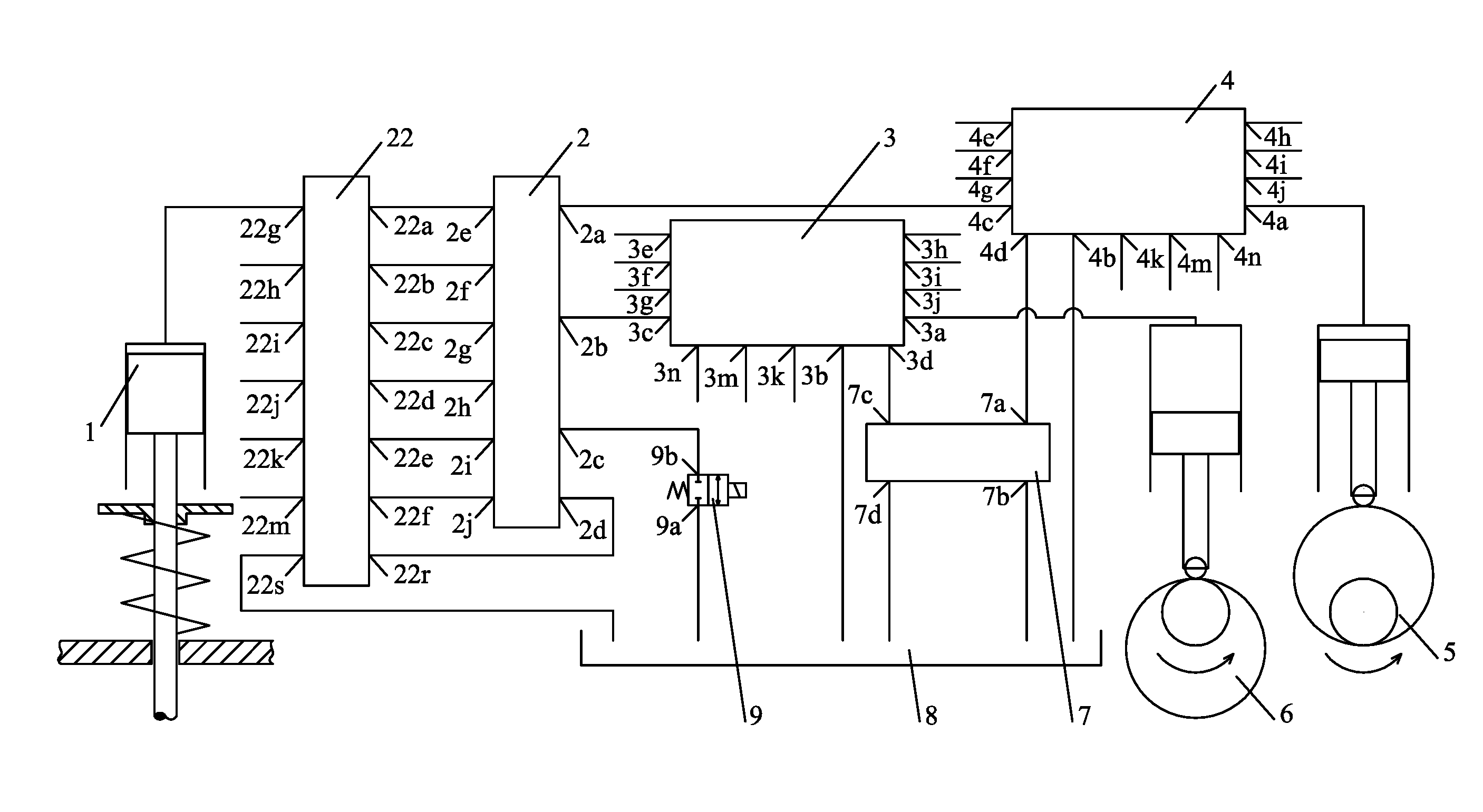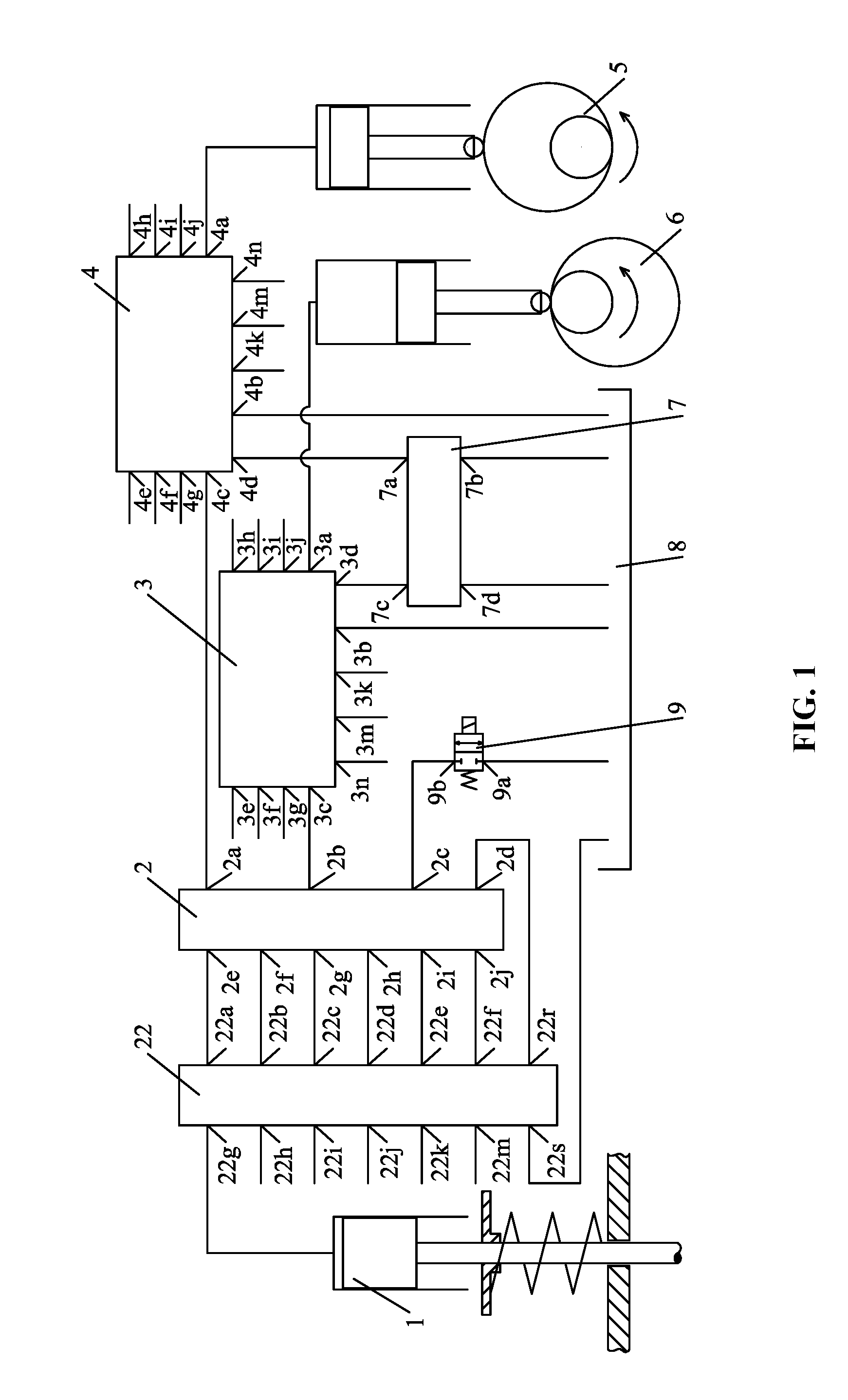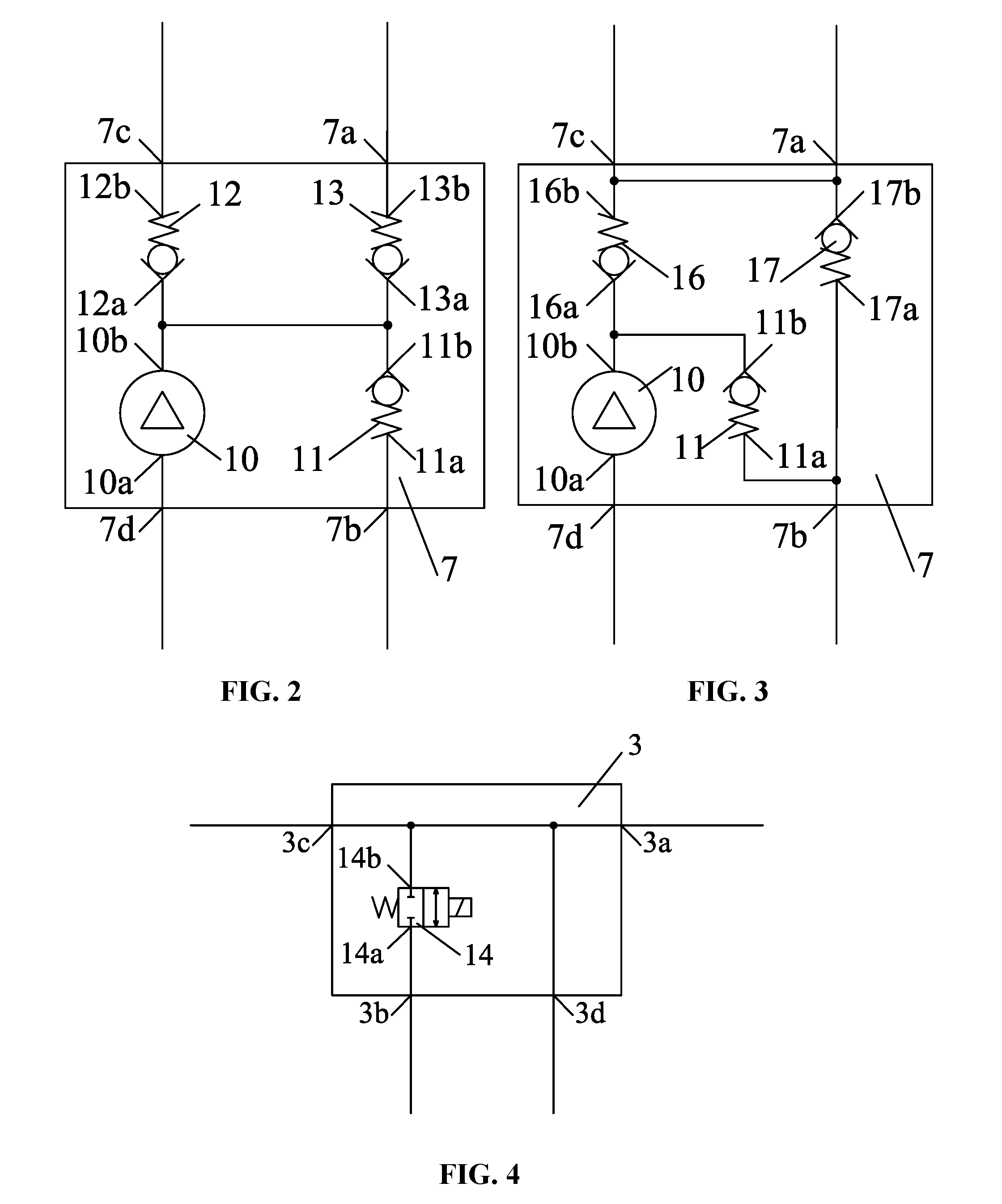With the rapid development of world economy, energy and environmental problems have adversely affected the
sustainable development of economy.
Internal
combustion engines are widely used, consume a large amount of
gasoline and produce many harmful exhaust gases and particles.
In addition, with the rapid increase of the number of internal
combustion engines worldwide, losses in properties and people's lives due to traffic accidents grow year by year.
However, at present, most auxiliary braking systems, e.g.
eddy current retardant module and hydraulic retardant module, exhibit problems during operation.
For instance,
brake parts overheat easily, the
brake efficiency diminishes quickly, the
controllability of braking ability is low, the vehicle tends to deviate while braking, and the
brake system occupies too much space.
Among current auxiliary braking systems of engines, the brake efficiency of a 720° C.A / cycle
compression release engine brake system is the highest, but this system also has problems with brake power.
Meanwhile, the structure of the
cam-less systems is complicated, the cost is high and the reliability, durability and
thermal expansion compensation control, etc. leave much to be desired.
Electro-hydraulic systems leave much to be desired in terms of movement accuracy control and
valve lift adjustability.
With the increase of the cylinder number, single
cylinder valve numbers and speeds of internal combustion engines,
common rail oil supply systems still have the following defects: 1) the volume of
common rail tube is high and the space
layout is difficult; 2) too many electromagnetic valves with high speed and large flow rate are applied in the system, and materials and technical processes of electromagnetic valves decide their high cost.
Therefore, also, it is more difficult to utilize traditional common rail oil supply electro-hydraulic variable valve actuators.
However, improvement is still required with regard to the following two aspects: first, the system needs more oil feeders and electromagnetic valves and its overall cost is high; second, the adjustable operating range of a valve affects the limit of oil supply and control devices, so it can neither realize the independent adjustment among the opening / closing timing and
valve lift nor the 360° C.A / cycle valve operation process required by the auxiliary braking mode of an
internal combustion engine.
However, such a system still has the following problems: 1) the system has too many electromagnetic valves and its cost is high; 2) the adjustable range of its
valve actuator is restricted to the oil supply rate of its
cam-
plunger oil feeder; it is impossible to open the
exhaust valve secondarily and change the 720° C.A / cycle mode of an internal combustion engine to the 360° C.A / cycle compressor brake mode, which restricts the extension of its functions.
However, the dual-mode fully variable valve actuation system still has several defects: 1) as the two-position five-way valve of this system needs to the switched under the different pressure differences of each oil port and the
pressure difference change of each oil port is extremely complicated, with the speed increase, the
response time of the two-position five-way valve shall be shorter to ensure higher flow rate.
Therefore, the two-position five-way valve has complicated structure and the
processing cost thereof is high; 2) under the drive mode of the internal combustion engine, this system cannot close the valve when the oil feeder is working, which restricts the
performance improvement of this system at idle or at the medium and
low speed.
While idling or the medium and
low speed are common running conditions for urban vehicles, and the operation of the internal combustion engine under these running conditions basically decides the actual
oil consumption and emission of the vehicles; 3) the structure of the drive-brake
circulator is complicated, more external oil pipes are required, the system manufacturability is low, the production cost is high and its structural
layout is difficult; 4) functions of various components of the system are mutually reliable, and the overall
layout of the system and many components need to be changed according to different application requirements, which restricts the application range of the system.
However, this system still has the following two defects: 1) the cycle selector structure is complicated, more oil pipes are required, the system manufacturability is lower, its cost is higher and its layout is more different; 2) functions of various components of the system are mutually dependent, and the overall layout of the system and many components need to be changed according to different application requirements, which restricts the application scope of the system.
 Login to View More
Login to View More  Login to View More
Login to View More 


